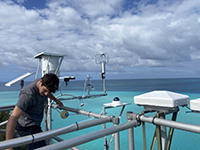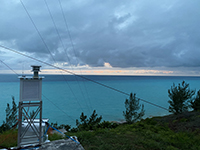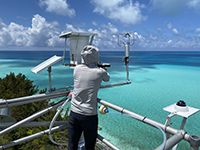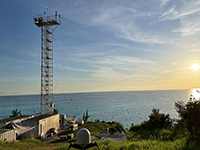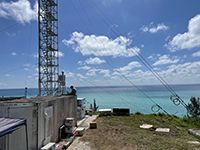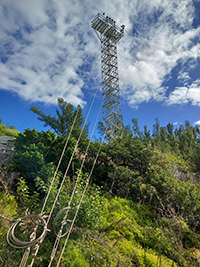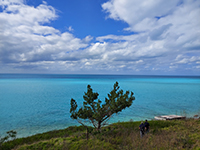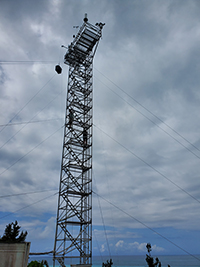Bermuda boundary Layer Experiment on the Atmospheric Chemistry of Halogens (BLEACH)
Where: Bermuda
When: June 2022 and January - February 2023
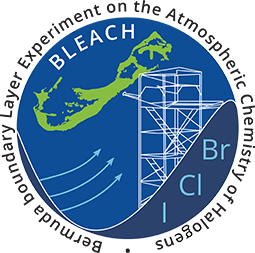
The Bermuda boundary Layer Experiment on the Atmospheric Chemistry of Halogens (BLEACH) is a project designed to measure the abundance and cycling of an extensive suite of reactive gaseous and particulate halogens at the Bermuda Institute of Ocean Sciences (BIOS) Tudor Hill Marine Atmospheric Observatory during two seasons (summer and winter). Reactive halogens in the troposphere have a profound influence on the oxidative capacity of the atmosphere as direct oxidants and through their influence on ozone and hydroxyl radical abundances. However, ambient observations of reactive halogens are sparse and only recently has this chemistry been comprehensively incorporated into global chemical transport models. Observations during BLEACH include many of most abundant gaseous bromine, chlorine and iodine species (HCl, BrO, ClNO2, IO, among several others) and their aerosol-phase counterparts (Br-, Cl-, and I-). Observations from the study will then be used to inform the halogen mechanism in the GEOS-Chem global chemical transport model as part of this project.
Gas phase measurement techniques include two Chemical Ionization Mass Spectrometers (CIMS) from the University of Washington and the University of York, a Long Path Differential Optical Absorption Spectrometer (LP-DOAS) from the University of California Los Angeles, a Tunable Infrared Direct Absorption Spectrometer (TILDAS) for the detection of hydrochloric acid from the University of York, and the NOAA CSL nitric oxide (NO) laser induced fluorescence (LIF) instrument to measure NO and NO2 at the very low mixing ratios typical of the remote marine atmosphere.
Aerosol measurements include filter samples which will be used to measure aerosol halogen abundances (Br-, Cl-, and I-), and the NOAA CSL Portable Optical Particle Spectrometer (POPS) to measure ambient particle size distributions which will be used to constrain heterogeneous reaction rates.
BLEACH is funded by the NSF AGS (National Science Foundation Division of Atmospheric and Geospace Sciences) Atmospheric Chemistry program and the Natural Environment Research Council (NERC) from the UK.
